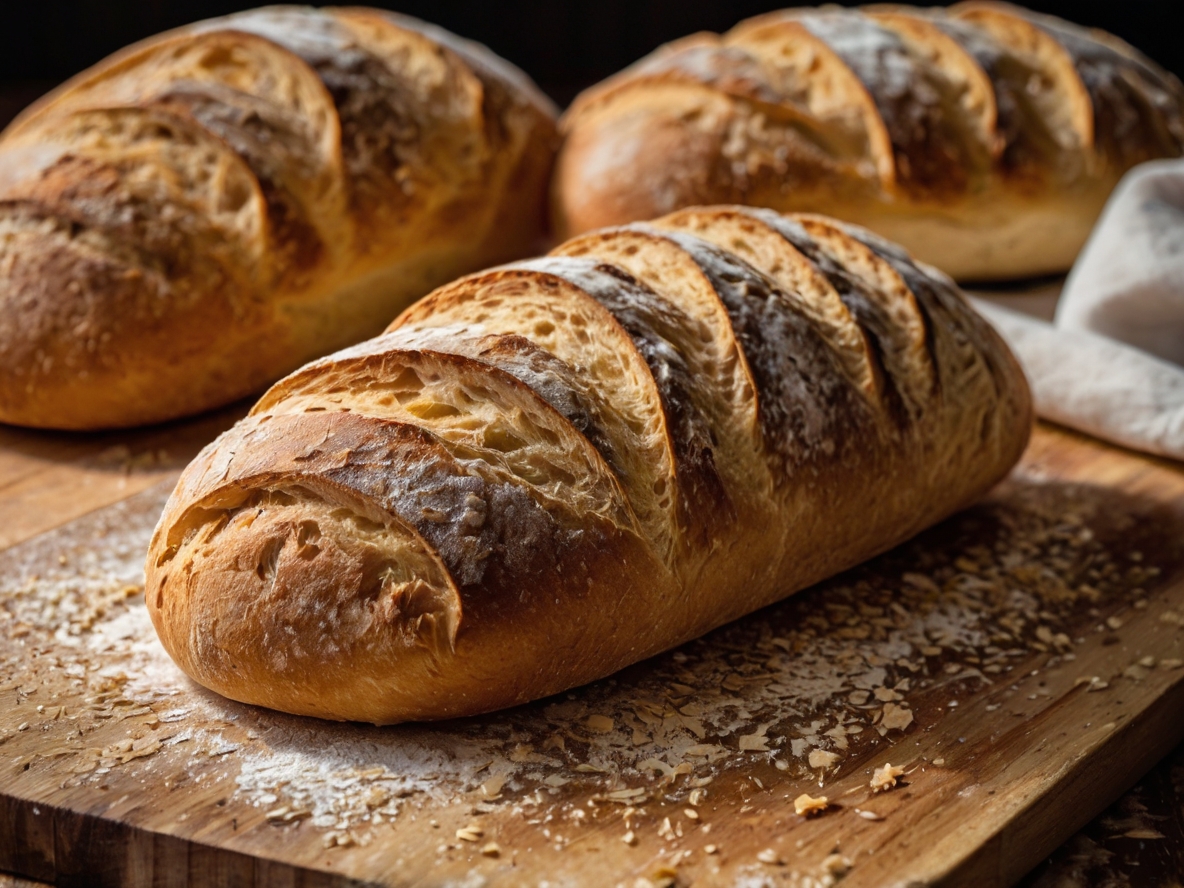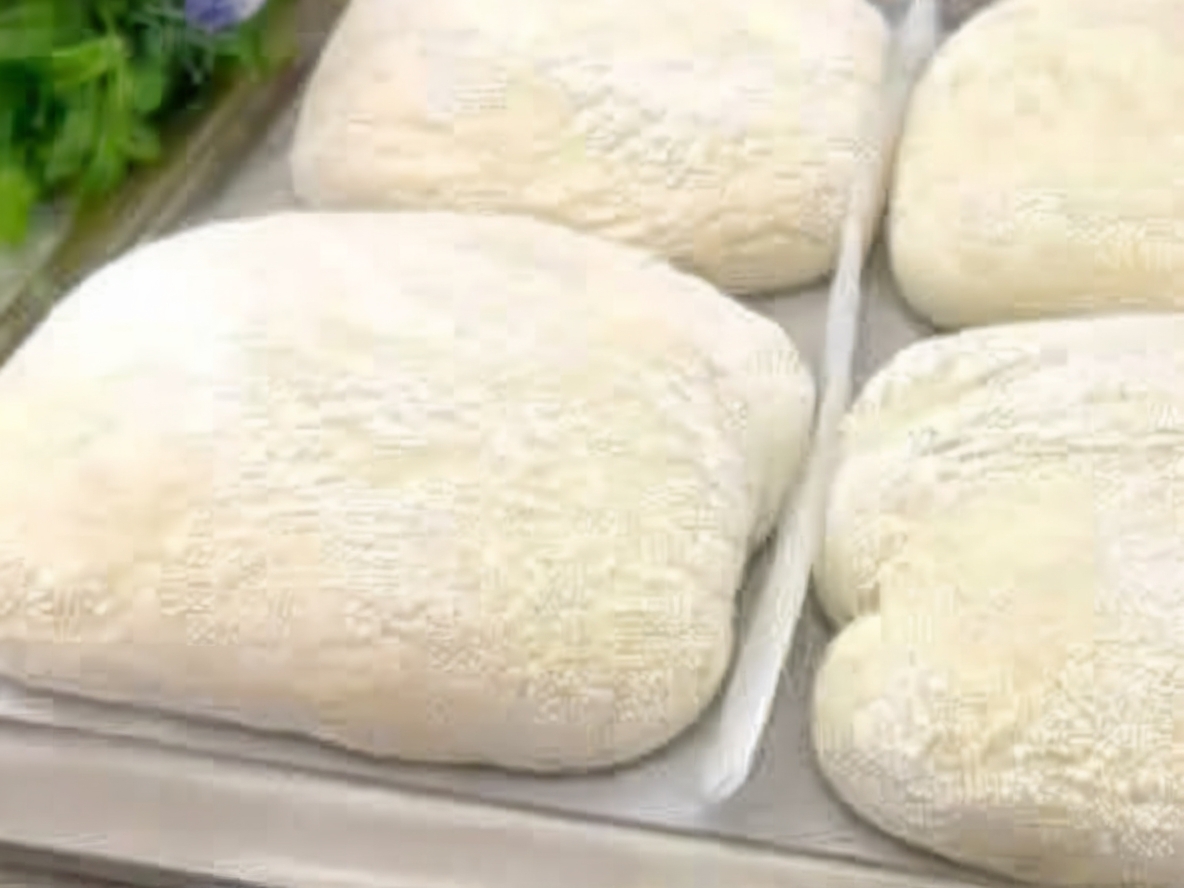WANT TO SAVE THIS RECIPE ?
Ciabatta Bread Recipe : Crafting Artisan Loaves at Home
Learn how to make airy and chewy ciabatta bread with a perfectly crispy crust. This Italian classic is a must-try for bread lovers and pairs beautifully with soups, stews, or as the foundation for a hearty sandwich."
Why This Recipe is Perfect
- Healthy Homemade Bread: Avoid preservatives and control ingredients for a wholesome loaf.
- Rich in Flavor: The slow fermentation of the biga adds depth and complexity to the bread’s taste.
- Flexible Pairings: Ideal for a balanced meal when paired with salads, soups, or lean protein.
- Artisan Appeal: Impress your family and friends with a rustic, bakery-style loaf.
Ingredients
For the Biga (Pre-Ferment):
- 1 1/2 cups (200g) bread flour or all-purpose flour
- 1/2 cup (120ml) water, room temperature
- 1/8 tsp active dry yeast
For the Dough:
- All the prepared biga
- 2 cups (260g) bread flour or all-purpose flour
- 3/4 cup (180ml) warm water
- 1/2 tsp instant dry yeast
- 1 1/2 tsp salt
- Cornmeal or extra flour (for dusting)
Step-by-Step Instructions
Step 1: Prepare the Biga
- In a medium bowl, mix flour, water, and yeast until a thick, sticky dough forms.
- Cover the bowl with plastic wrap and let it sit at room temperature for 8–16 hours, or until it becomes bubbly and aromatic.
Step 2: Mix the Dough
- In a large mixing bowl or stand mixer, combine the biga, additional flour, water, yeast, and salt.
- Mix until a sticky, wet dough forms. If using a stand mixer, knead with the dough hook for 5–7 minutes on medium speed. If kneading by hand, use slow, gentle movements.
Step 3: Build Structure (Stretch and Fold)
- Let the dough rest for 30 minutes, then perform the first stretch and fold:
- Gently stretch the dough from one edge and fold it over itself. Repeat on all sides.
- Repeat this process 3–4 times with 30-minute rests in between to develop gluten and structure.
Step 4: Shape the Loaves
- Generously flour a work surface and gently pour the dough onto it. Avoid deflating the air bubbles.
- Cut the dough into rectangle or square shapes using a bench scraper.
- Transfer the pieces to a parchment-lined baking sheet dusted with cornmeal or flour.
- Cover loosely with a damp cloth and let the dough proof for 1 hour, or until slightly puffy.
Step 5: Bake the Bread
- Preheat your oven to 450°F (230°C) with a pan of water on the bottom rack to create steam.
- Bake the ciabatta loaves for 20–25 minutes, or until golden brown with a crispy crust.
- Rotate the baking sheet halfway through to ensure even coloring.
Tips for Success
- Use High-Quality Ingredients: Bread flour is ideal for a chewier texture, but all-purpose flour works well too.
- Hydration is Key: Ciabatta dough is naturally wet and sticky—don’t add extra flour during mixing.
- Perfect Crust: The steam in the oven helps achieve a crackling crust, so don’t skip this step.
- Patience Pays Off: Allow the biga and dough to ferment fully for the best flavor and texture.

>
Why This Recipe Stands Out
- Nutritional Benefits: By using quality flours and slow fermentation, ciabatta offers natural fiber and minerals, making it a great companion to soups and salads.
- Restaurant-Quality Results: Bring the taste of an Italian bakery right into your home.
- Versatile and Customizable: Add herbs, olives, or garlic for unique variations.
Ideal Pairings
- Soups and Stews: Perfect for soaking up broths or creamy soups.
- Sandwiches: The light and airy texture pairs well with grilled chicken, fresh veggies, or lean turkey.
- Breakfast: Toast and spread with avocado, ricotta, or nut butter for a healthy start to your day.
Homemade ciabatta bread delivers a perfect balance of texture, taste, and versatility. Master this recipe, and you’ll have an artisan loaf that’s healthier, tastier, and more rewarding than store-bought options. Enjoy the fruits of your labor with every bite! 🍞✨
